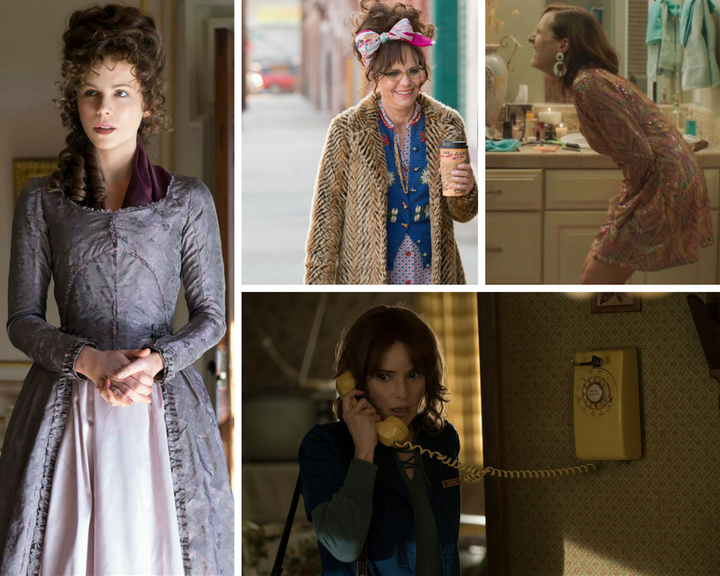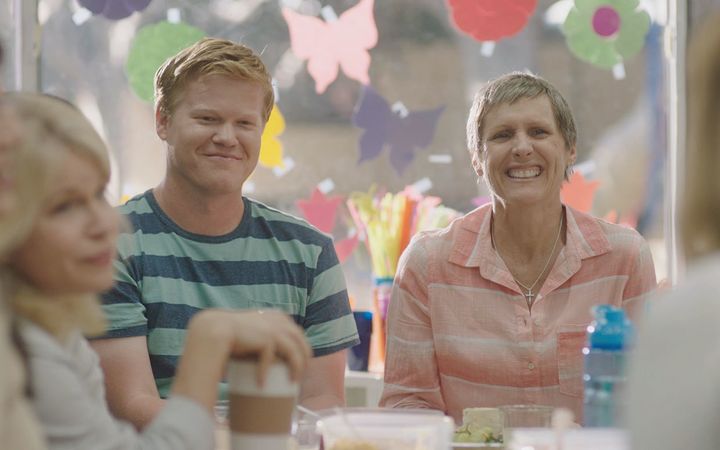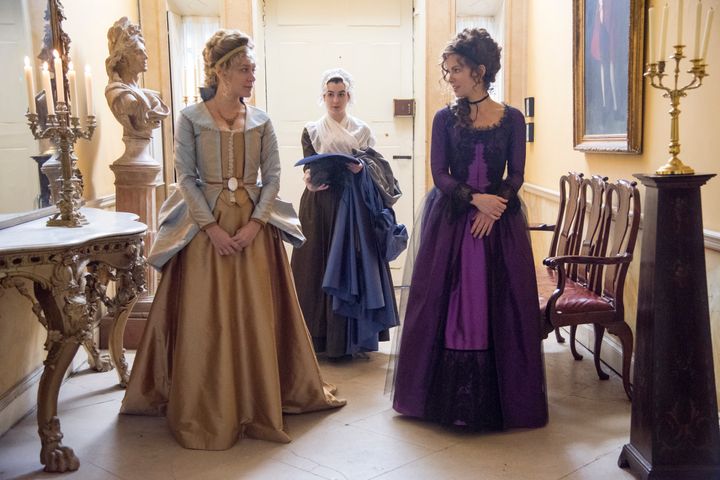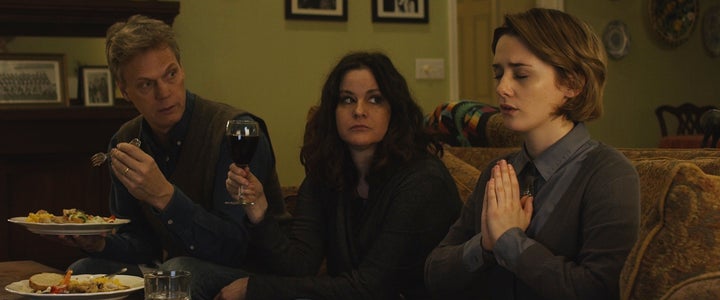
You can be highbrow. You can be lowbrow. But can you ever just be brow? Welcome to Middlebrow, a weekly examination of pop culture.
A pop culture fan’s greatest pleasure is the unbridled joy of seeing an actor or actress surface in an unexpected role. Often that’s the draw: funnyman Robin Williams playing a twisted stalker in “One Hour Photo,” perennial hero Henry Fonda slipping on villain’s shoes in “Once Upon a Time in the West,” period-piece thespian Kate Winslet doing the quirky-bohemian routine in “Eternal Sunshine of the Spotless Mind,” sitcom dad Bryan Cranston going dark on “Breaking Bad.” Sometimes, like with Tom Cruise in “Tropic Thunder” or Cameron Diaz in “Being John Malkovich,” these performances seem flung from an alternate Hollywood where celebrities’ personas don’t dictate the roles they attain.
This year, we’ve seen a handful of undervalued actresses shine in parts that cut against their typical currency. Better yet, they’ve all survived the Hollywood faux pas of turning 40. Some, like Ally Sheedy in “Little Sister,” are far removed from the Meryl Streeps, Angela Bassetts and Laura Derns of the world ― actresses who’ve remained sought-after for a variety of types. Others, like Molly Shannon in “Other People” and Winona Ryder on “Stranger Things,” have managed to hold onto the acclaim of their younger days ― they just don’t often land roles that restore that glory. And others still, like Kate Beckinsale in “Love & Friendship” and Sally Field in “Hello, My Name is Doris,” have entered a comedic realm that they haven’t visited to any great success in years.
(I regret not having an actress of color to cite. Lend your suggestions in the comments. For a male example, try Craig Robinson in “Morris From America.”)

First thing’s first: For studios, this is a prudent economic choice. Box-office receipts are shown to increase in years with more female-centered releases. “Hello, My Name Is Doris” and “Love & Friendship” ― the two aforementioned titles to have completed their theatrical runs ― surpassed financial expectations. They are, respectively, 2016’s fourth- and fifth-highest-grossing independent movies to date.
Whereas “Other People” lets us see Shannon’s dramatic side, “Love & Friendship” reminds us that Beckinsale has comedic chops ― something lost in the glammed-up action roles that have populated her résumé since 2003. Before the “Underworld” movies (four and counting), silly “Van Helsing” and the joyless “Total Recall” reboot, Beckinsale played Hero in “Much Ado About Nothing,” a Studio 54 regular in “Last Days of Disco” and the romantic lead in “Serendipity.” The tart “Love & Friendship,” a Jane Austen adaptation, is aligned with that trajectory, casting Beckinsale as a vain Regency widow seeking a husband to ensure her wealth. She hurls snotty one-liners at everyone who crosses her path. It’s one of 2016’s most delightful movies, partly because it makes us wish Beckinsale were handed award-worthy roles like this every year.

With Shannon and Sheedy, it’s as simple as this: It’s lovely to see the actresses’ visibility rise in their 50s. Both have worked steadily, but you probably wouldn’t recognize most items on Sheedy’s filmography, and Shannon’s paychecks stem from guest stints on television (”Getting On,” “The Spoils of Babylon”) and supporting gigs in underperforming films (”Me and Earl and the Dying Girl”).
Last year, when Kristen Wiig starred in “Welcome to Me” and “The Diary of a Teenage Girl,” she brought to dramatic spheres the same bodily zaniness that made her a “Saturday Night Live” star. In “Other People,” Shannon, a fellow “SNL” veteran, extracts a soulfulness that’s often undervalued when laughing at the armpit-smelling Mary Katherine Gallagher and the leg-kicking Sally O’Malley. Playing a mother slowly dying of cancer, Shannon’s character grieves quietly, attempting to keep up with the life that’s fading before her eyes. We laugh through the tears specifically because we are familiar with Shannon ― we know her mannerisms, her sensibilities, the glee she has brought us for years. That’s why casting her in this genre-bending role has such impact. (See also: Shannon on HBO’s “Divorce.”)
Rounding out their ‘80s origins, Ryder and Sheedy are cast in work that implicitly comments on their careers. Their earliest roles were teen misfits. In “Stranger Things” and “Little Sister,” respectively, they play misfit mothers of kids with off-center adolescences. When we see Sheedy anxiously smoke a bowl at the start of “Little Sister,” it’s almost like peeking in on Allison, the “basket case” from “The Breakfast Club,” 31 years later. And when Ryder is ripping her house to shreds and talking to blinking Christmas lights in hopes of finding her lost son, it’s like “Heathers” heroine Veronica Sawyer has vowed to fight the preppy enemy far into adulthood.

Whether or not anyone caught these films and shows specifically because of the actresses involved, there’s no denying the power of spending time with beloved stars who aren’t likely to headline a summer blockbuster anytime soon. (They probably aren’t even interested, bless their hearts.) It’s almost ― almost ― a corrective for the thankless roles that turn too many A-listers into men’s background players (Amy Adams in “Batman v Superman,” Laura Linney in “Teenage Mutant Ninja Turtles,” Amy Ryan in “The Infiltrator”).
Even beyond that, unconventional casting creates a special bond between the character and the audience, because celebrity culture renders it nearly impossible to engage with mainstream art without assigning value to the faces we watch onscreen. Sally Field is especially wacky in “Hello, My Name is Doris” precisely because it’s so far afield of her recent austere work in “Lincoln” and the ABC show “Brothers & Sisters.”
This phenomenon reveals a truth that Hollywood sometimes ignores: Most actors have range, and certain actors are not chosen to display that range throughout their careers. When they do, we see it as a revelation. We applaud directors for “taking a chance,” and understandably so: The economy of popular culture dictates that art’s gatekeepers not risk their bottom line in favor of risky casting. But what if it were no longer considered risky?
To use a dude example, what if we acknowledge that goofy John C. Reilly is also a bona fide serious guy who has proven himself in umpteen dramas? What if someone casts Tracee Ellis Ross in, I don’t know, a Zora Neale Hurston biopic? Seeing performers move between genres and resist their pre-packaged marketability is what postmodern pop culture is all about: the knowledge that we bring ourselves to the entertainment we consume, and in engaging with that entertainment in unexpected ways, we become more engrossed. We challenge the mandates that prompted our surprise to begin with. In the end, everyone ― especially undervalued actresses ― becomes richer.
Follow Matt Jacobs on Twitter: @tarantallegra


